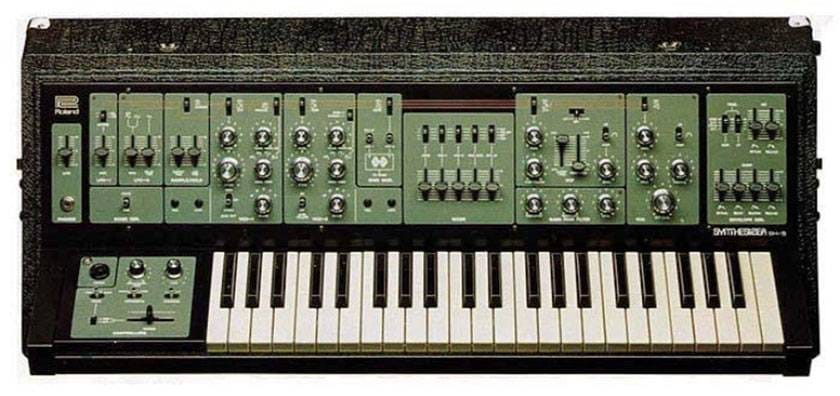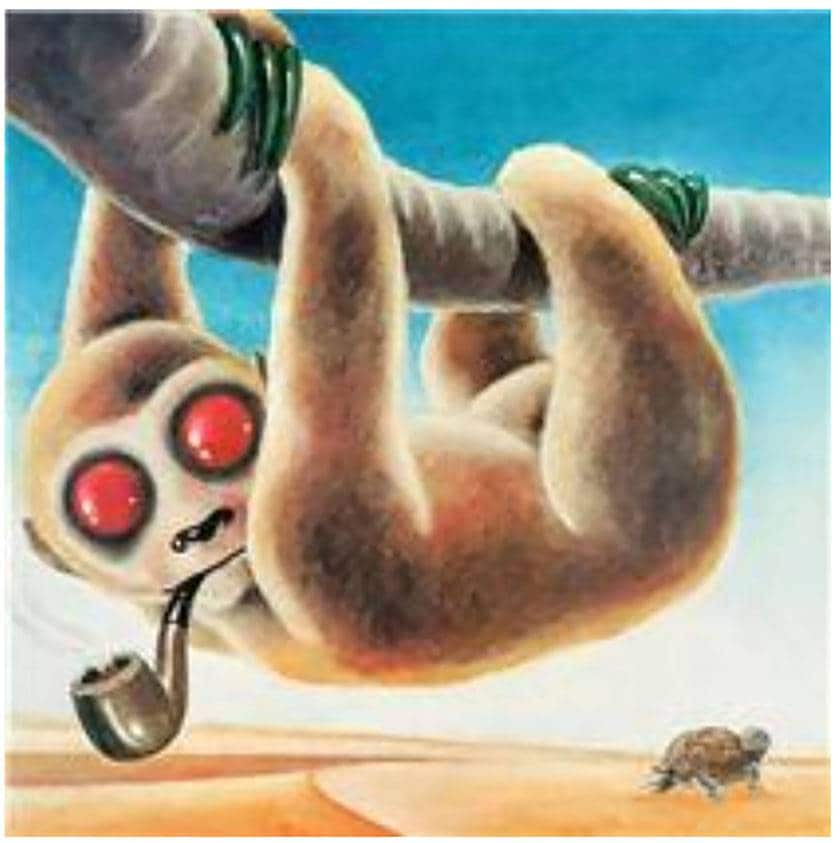My first synthesizer was the Roland SH-5 and Yonin Bayashi
Following the Oberheim synthesizer is Roland, the Japanese hero of synthesizers. This time I'm going off the topic of the polyphonic synthesizer, and I would like to introduce Japanese progressive rock band Yonin Bayashi, and my first experience with synths as an introduction.
I first got a Roland synthesizer when I was 18 years old, a model called the SH-5. It was a monophonic synth, so naturally, there was no way to produce chords. It weighed 24 kg and was a rugged, mechanical synthesizer. I didn't know anything about synths, so that's why I chose this model. At that time, the Minimoog used by Keith Emerson was a whopping 630,000 yen. There was no way I could afford it. I had a longing for a stand-up panel like the Minimoog and make sounds while operating the knobs, so I chose the SH-5 over the competing Korg 800DV.
At first glance, the panel looks complicated, but the signal flow of VCO-VCF-VCA was organized and the layout was easy to understand. A cosmic and random automatic scale called S/H (Sample & Hold) that was not available on the Minimoog at that time? I was thrilled with the function. The sound of SH-5 was thick and had a good, rough sound.
I copied Yonin Bayashi, known as the Pink Floyd of Japan!
I belonged to the rock music club at my university, and I copied Camel, Utopia led by Todd Rundgren, YES, and Yonin Bayashi with a band that copied progressive rock. The SH-5 was a big success there.

Roland SH-5
Recommended album: "Isshoku Sokuhatsu" (1974) / Yonin Bayashi

Yonin Bayashi is a Japanese progressive rock band formed in 1971. The members were Katsutoshi Morizono (G), Hidemi Sakashita (key), Shinichi Nakamura (B), Daiji Okai (Ds). Ippatsu was released in 1974. It has been highly evaluated as a masterpiece of Japanese rock.
In the band I belonged to, we copied "Festival" and "Isshoku Sokuhatsu". The charm of Yonin Bayashi is largely due to Katsutoshi Morizono's guitar and vocals. Although he is not a particularly good vocalist, Morizono's singing has an indescribable flavour. Morizono is an indispensable player for the band aiming for the top of Japanese progressive rock, and the shaded vocals and the poems of Yasuo Suematsu add depth to the songs of Yonin Bayashi. I think it’s surprising that the 20-year-old members made this album at the time.
Recommended Songs: "Isshoku Sokuhatsu"
We copied famous songs from Yonin Bayashi’s "Isshoku Sokuhatsu". The first copy was "Festival", but as this column is about synthesizers and keyboards, I’ll discuss "Isshoku Sokuhatsu" first.
The epic, which takes up much of the B-side, was also the epic of progressive rock at the time. After the intro that emphasized the short rhythm, it starts with Morizono's guitar melody, has a synthesizer part, and connects to the vocal culvert, making it a suite composition.
Hidemi Sakashita's keyboard playing is impressive with the Hammond organ, synthesizer, and so on. The notches of the Hammond organ are reminiscent of Pink Floyd's "Meddle". Even before becoming a professional band, Yonin Bayashi was said to be a band that played "Echoes" from Pink Floyd's "Meddle" with a perfect copy, so that's an nod enough in itself.
At the time, I was using the Hammond New X5 and the old Columbian electric piano in addition to the SH-5. Mr. S, who was a light-sounding classmate, majored in piano in the music department, so his skill was professional and I learned a lot from him (S later became a professional, and played on Junichi Inagaki's live album, J.LIVE).
The SH-5 played an active part in the bridge-like interlude part of the vocal section. In the bridge part of this album, Morizono's vocals are put into a Leslie speaker (rotary speaker for organ) to create a mysterious feeling. In the Yonin Bayashi live show I saw, Mr. Sakashita made the noise of the wind through the pink noise of the SH-5 using a bandpass filter. We imitated it and made a similar sound. The wind effect was very easy to make with the SH-5. Around 1978, no one thought that the sound of the wind could be played with a keyboard instrument, so I have a lot of good memories.
Recommended songs: “Festival”
"Omatsuri" is the first Yonin Bayashi song our band copied. I was 19 years old. This song has the guitarist Katsutoshi Morizono who has a good non-rock character. The fact that it is not rock-like is subtly related to the factor that Morizono later withdrew from Yonin Bayashi. Morizono joined a jazz fusion band called Prism after leaving Yonin Bayashi. By listening to the "Festival", you can find something in common with the music developed by Prism.
If you listen to the lead part of "Festival", you can see that it is not a distorted guitar like "Isshoku Sokuhatsu", but a sound quality that makes use of the natural tone of the Stratocaster. The repeated two-chord development of Em7 and DΔ7 is kind of reminiscent of bossa nova guitar. Sakashita's organ solo also seems to be more conscious of bossa nova than rock in the first half.
It becomes rock from the middle, but the mood that runs throughout "Festival" is like a lonely boy wandering in a dream? Morizono's guitar after the chorus also has a phrase that reminds me of the loneliness of "a boy in a rosy shirt who is left out of the group and returns to his city" (the situation in the song).


























